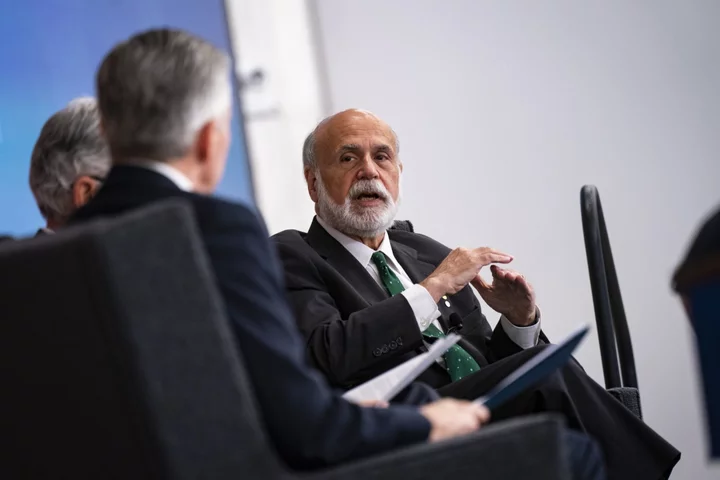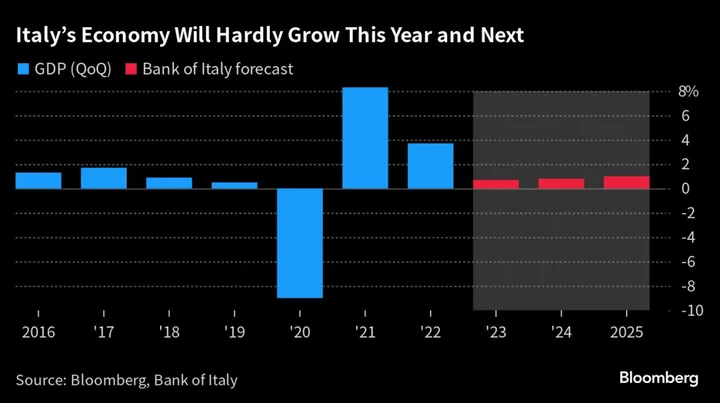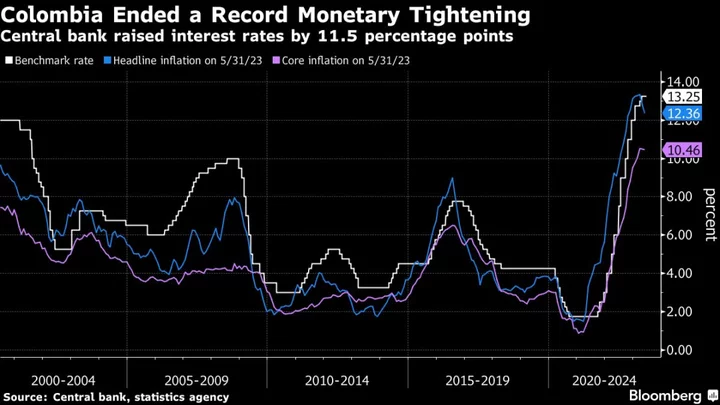Ben Bernanke’s review into the Bank of England’s forecasting process will look into whether the market path for interest rates should continue to be used as the main assumption from which to build its projections.
The UK central bank on Monday set out the terms of reference for Bernanke’s review, focusing the former US Federal Reserve chair on five key aspects of the process. Those include “the appropriate conditioning assumptions in projections, including the interest rate path on which the forecast is based.”
The BOE appointed Bernanke in July to examine the forecast process after heavy criticism from politicians and some economists for underestimating the threat inflation posed. The BOE along with the Fed and European Central Bank initially concluded that rising prices were a “transitory” effect of ending pandemic lockdowns that would soon pass.
Instead, inflation soared to a four decade high, forcing the BOE to play catchup in pushing interest rates to the most since 2008.
The review is focused on the lessons to be learned for future forecasts “during times of significant uncertainty.” It will not pass judgment on past policy decisions, the terms of reference showed.
“The review should be forward looking – rather than an ex-post review of policy decisions – but that view can be informed by taking lessons from past experiences and from the experiences of other central banks,” it said.
Market rates are the key assumption on which the forecast is produced. The idea is that, by using market forecasts, the BOE does not reveal a preferred path for interest rates. However, the practice can distort the outlook dramatically.
Last November, when the rate path partially reflected the chaos caused by the Liz Truss budget program, the forecast was for a deep recession that Governor Andrew Bailey tried to play down in his subsequent public comments.
Bernanke has experience of a different approach, using the “dot plots” of each individual rate setter’s preference to build a forecast based on a more likely rate path. Former BOE policymaker Gertjan Vlieghe argued for the use of dot plots and another former ratesetter Silvana Tenreyro used them in her speeches.
Another option would be to produce a forecast assuming unchanged interest rates. The BOE already does produce a solely inflation forecast based on that premise.
The review will also look at:
- Staff processes and analysis supporting the MPC’s policy deliberations
- The analytical framework for taking account of significant shocks and shifts on the supply as well as the demand side of the economy
- The role of the forecast in the MPC’s policy decisions and communications, including the roles of the MPC and the staff in the development of the official forecast
- Material provided to the MPC to assist the discussion and communication of the outlook and the risks around that.









